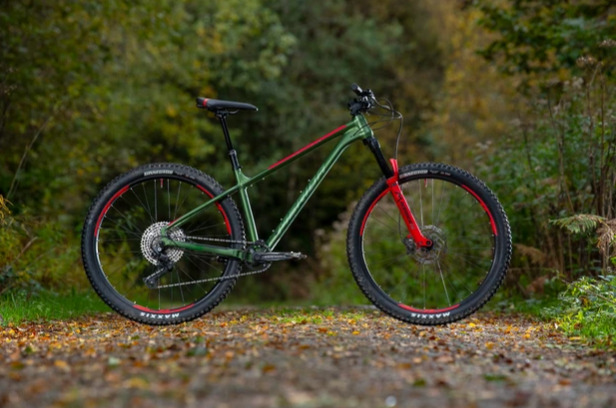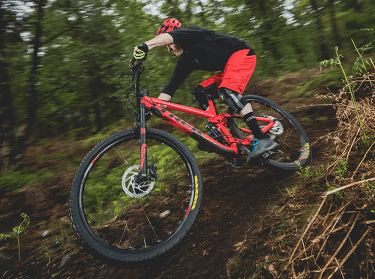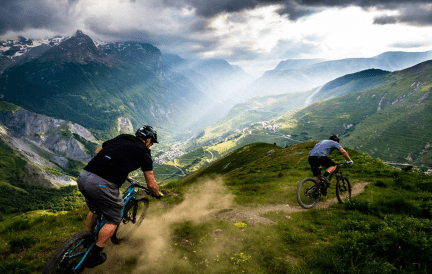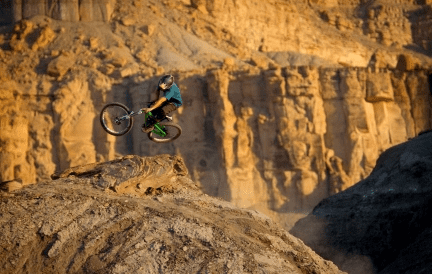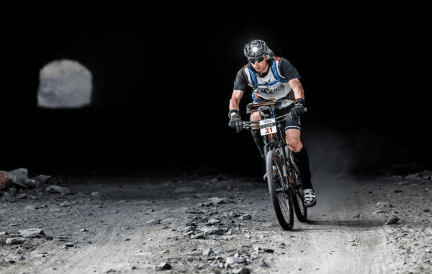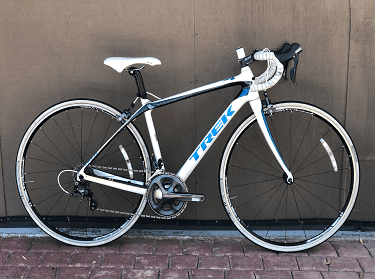If you have a 2000 USD and are confused about finding the best full suspension mountain bike under 2000 USD, this article is right for you because we have a list of some best full suspension mtb for 2000 USD and a buyer’s guide just for you.
- Part 1: Best Full Suspension Mountain Bike Under 2000 USD Products
- Part 2: Products Specification
- Part 3: Products Test Results
- Part 4: Conclusion
- Part 5: Buyer’s Guide
- Part 6: Products Glossary
Part 1: Best Full Suspension Mountain Bike Under 2000 USD Products
1.1 Vitus Mythique 29 VRS ($1799)
The first best full suspension mountain bike under 2000 USD is the Vitus Mythiques. The Vitus Mythique is one of the most affordable full-suspension bikes on the market, with unquestionable quality. As can be seen, it has a sleek and sexy look that draws the eyes. Mythique is just like the rigs athletes use when it comes to performance.
Vitus Mythique 29 VRS is a great full-suspension bike that can go anywhere on the mountain. Its ergonomic geometry and high-quality parts take this bike and your performance and trail-riding goals to a whole new level.
The Vitus Mythique 29 VRS full-suspension bike features an aluminium frame, X Fusion forks, and rear shock with a combined travel of 130 mm. Additionally, the 10-speed bike comes equipped with a Shimano Deore drivetrain.
Mythique 29 VRS is available as a men’s 29er or a women’s 27.5″ wheeled bike. Additionally, it is equipped with Shimano MT401 hydraulic disc brakes. Furthermore, this bike is equipped with a horst-link 4-bar suspension system, which means no route is too difficult. Also, this full-suspension bike will elevate you to new heights by combining cutting-edge geometry with reliable components and a setup you can rely on. Not only is the Mythique 29 VRS capable of the most adventurous and adrenaline-pumping descents, but also those treacherous climbs.
Pros and Cons
Pros
- 6000 series aluminum alloy.
- The suspension is excellent and the price is reasonable.
- Rust-proof and light in weight.
- Drivetrain with a 10-speed gearbox.
- Front and rear X fusion suspension.
Cons
- Have to cut the seat post to fit your height.
- Far enough into the frame.
1.2 Norco Fluid FS 3 ($1,799)
The second best full suspension mountain bike under $2 000 is Norco Fluid FS 3. Above all, the superior X6 double-butted aluminium frame of the Norco Fluid FS 3 is an excellent deal at this pricing point.
WTB STP i29 rims on this full-suspension mountain bike have been paired with Goodyear Escape 2.6′′ tyres so you can go tubeless for better traction and fewer flats. Eventually, it means that you can go tubeless for a smoother ride.
Moreover, the Fluid FS 3 is equipped with a 12-speed SRAM SX Eagle drivetrain and a cassette with an 11-50-tooth gear range, which makes climbing and cruising down descents a breeze. On the other hand, some users claim that Norco messed up the shock tune, making this MTB feel harsher and lifeless than it should.
If you require strong stopping force for a safe and confident ride, then you are in good hands with this MTB’s Tektro HD-M275 hydraulic disc brakes.
Furthermore, the Fluid FS 3 comes equipped with the TranzX dropper post, so that you can quickly raise and lower your saddle, subsequently allowing you to climb with full leg extension while gliding downhill with a lower centre of gravity.
Pros and Cons
Pros
- Killer build and finish.
- Lightweight and durable X6 aluminium frame.
- TranzX dropper post.
Cons
- Norco falls to nail the shock tune.
1.3 Calibre Bossnut ($1197)
If you’re looking for a budget-friendly full-suspension bike, this might be the one for you. In terms of price, The Calibre Bossnut is by far the most affordable bike on this list! If the low cost of this full-suspension MTB seems too good to be true, it probably is.
The bike is well-built, with adjustable front and rear shocks. Also, this bike features a slew of SRAM components, including the new SX Eagle drivetrain, which features 12 gears and a massive 11-50 cassette. This lets you maintain your speed using a diverse variety of responsive gears.
The bike is equipped with a 130mm RockShox RL fork up front and a Monarch R shock in the back. Both of these can be modified for compression and rebound damping at low speeds.
When combined with the 29-inch wheels, all of these features make you unstoppable on the terrain. They provide the best grip and traction, especially on the front tyre. This bike’s aluminium alloy frame and descent geometry make it lighter and eliable, especially when climbing.
This is the ideal bike for riders who value proper geometry and design. Consider the SRAM Level T brakes, which are helpful when riding downhill. They have the best stopping power when it’s needed. Therefore, you can hit all kinds of corners in a way that makes you happy.
Pros and Cons
Pros
- Good shape.
- Excellent value for money.
- Amazing trail manners.
Cons
- Axles that are non-boost restrict your wheel upgrading options.
- With stock 160/180mm rotors, SRAM Level T brakes lack power.
Part 2: Products Spesification
Vitus Mythique 29 VRS
Available sizes: S, M, L, XL
Headset: Acros
Tyres: Schwalbe Magic Mary SnakeSkin ADDIX Soft EVO 29×2.35in (f), Schwalbe Hans Dampf ADDIX Performance 29×2.35in (r)
Stem: Nukeproof Neutron, 45mm
Shifter: SRAM SX Eagle
Seatpost: Brand-X Ascend 150mm dropper (L)
Saddle: Nukeproof Neutron
Rear shock: X-Fusion 02 Pro RL
Rear derailleur: SRAM SX Eagle (1×12)
Handlebar: Nukeproof Neutron, 800mm (L)
Bottom bracket: Truvativ PowerSpline
Grips/Tape: Vitus
Frame: 6061 aluminium alloy, 140mm (5.5in) travel
Fork: X-Fusion Sweep RC, 140mm (5.5in) travel
Cranks: SRAM SX Eagle, 32t
Chain: SRAM SX Eagle
Cassette: SRAM PG-1210, 11-50t
Brakes: Shimano MT401, 180mm rotors
Wheels: WTB ST i30 TCS, Vitus hubs
NORCO FLUID FS 3
Available sizes: M, L, XL (29in wheel) / XS, S, M (650b wheels)
Headset: Sealed cartridge bearings
Tyres: Goodyear Escape Premium 29×2.6in
Stem: Norco, 50mm
Shifter: SRAM SX Eagle
Seatpost: TranzX JD-YSP18 130mm dropper
Saddle: Norco XC
Rear shock: X-Fusion 02 Pro R
Rear derailleur: SRAM SX Eagle (1×12)
Handlebar: TranzX, 780mm
Bottom bracket: Truvativ PowerSpline
Grips/Tape: VP lock-on
Frame X: 6 double-butted 6061 aluminium alloy, 120mm (4.7in) travel
Fork S: R Suntour XCR34, 130mm (5.1in) travel
Cranks: SRAM SX Eagle, 30t
Chain: SRAM SX Eagle
Cassette: SRAM PG-1210 Eagle, 11-50t
Brakes: Tektro M275, 180/160mm rotors
Wheels: WTB ST i29 TCS rims on Norco hubs
Calibre Bossnut
Available sizes: S, M, L, XL
Brakes S: RAM Level T, 180/160mm rotors
Cassette: SRAM SX Eagle
Cranks: SRAM SX Eagle
Fork: RockShox Recon RL, 130mm (5.1in) travel
Frame :Hydroformed 6061 aluminium alloy, 130mm (5.1in) travel
Handlebar :Calibre, 780mm
Rear derailleur: SRAM SX Eagle
Rear shock: RockShox Monarch R
Saddle: Calibre Trail
Seatpost: Calibre rigid
Shifter: SRAM SX Eagle
Stem: Calibre, 45mm
Tyres: WTB Vigilante High Grip Comp (f) and WTB Trail Boss Comp (r) 27.5×2.3in
Wheels: WTB i29 rims on Formula hubs
Part 3: Products Test Results
Vitus Mythique 29 VRS
The Vitus is surprisingly easy to climb because it is very light and doesn’t have a lot of pedal bob from the Horst link suspension. The effective seat tube angle is 75.7°, and the sitting climbing posture is sufficiently spacious with a 602mm effective top tube.
Shorter riders won’t have a problem with the 67.5° seat angle, but taller riders with longer dropper posts will have the saddle move backward into less efficient spots. Overall this bike climbs nicely, descends pretty steadily, and handles any type of trail.
Furthermore, the 66° head tube angle is adequate for regular trail riding, a slacker head tube angle would provide an even more confident ride on steep terrain. Additionally, the new frame is somewhat too high at the bottom bracket, which gives your feet a sense of being further from the ground and detached from the trail.
Lastly, increasing the shock sag to about 35% helps to an extent and improves tracking. It does not offer you a very soft rear end or a harsh bottom-out, but it does make pedalling feel slightly less efficient.
Norco Fluid FS 3
Norco has figured out how to climb while seated, with your feet and hips over the cranks. Having an 11-50t, 12-speed SRAM Eagle cassette means there’s enough gearing range to get up most things. This, along with the supportive rear suspension, makes the Fluid FS feel good about climbing big hills.
The big wheels and tyres are difficult to get rolling and feel dull while accelerating, which requires more work uphill and can make things feel like a slog, especially on steep pitches or when changing speed frequently over the knobbly ground.
Moreover, the long, solid chassis positions you well for descents, and there are no handling quirks to frighten you or deflect the wheels at high speeds. When pointed downhill, the Norco generates a great head of steam, keeping a consistent pace on smoother, flowier, trail-center-type tracks.
This energy can occasionally develop to the point where it becomes a runaway train, making it more difficult to manoeuvre around narrower areas at speed. Additionally, the Fluid FS might be hard to use over tough repetitive hits or steep off-piste terrain.
Calibre Bossnut
Unsurprisingly, the Bossnut is so awesome because it offers the finest all-around trail performance of any bike in this price range.
It’s fairly stable on climbs unless you’re hauling the pedals. Although the shock lacks a low-speed compression control that would assist dampen any bob, also it is fairly efficient when sitting and spinning. This is aided by the quicker-rolling Trail Boss rear tyre, which does not absorb excessive speed.
On a flat track, the Bossnut is easy to control around corners and pop off rollers and roots with its neutral shape. With grippy front tyre, which has an excellent form on the 29mm (internal) rim, instils confidence in you to hit corners at a decent speed. Moreover, on descents, the Bossnut continues to impress. Its rear suspension it’s not the most refined on the market, with a hint of kick on larger impacts, but it’s generally well-controlled and predictable once the rebound has been dialled in.
On chattery trails, the harder-compound rear tyre skips just that little, but the bike’s geometry allows you to keep it in check and ride it out until you reach the next smooth trail. Also, there is sufficient support to allow you to drive the bike into rollers and berms, generating more speed without the bike feeling too wallowy.
Although the fork includes sufficient adjustability to tame most tracks, the comparatively slender legs flex under the heaviest compressions and impacts, and the fairly basic Motion Control damping system can become clogged. Lastly, it’s easy to forget how cheap the Bossnut is compared to other full-suspension because its performance rivals that of trail bikes that would cost hundreds of dollars more to buy.
Part 4: Conclusion
All of the products mentioned are among the best full suspension mtb under 2000 USD. They all have their pros and cons. It’s merely a way to figure out what kind of bike you’ll need and evaluate the benefits and drawbacks of several models before making a purchase.
Part 5: Buyer’s Guide
What Is A Full Suspension Mountain Bike
Front and rear suspension are included on full-suspension mountain bikes. They have a front fork and a rear shock. Significantly, it improves the bike’s traction and rider convenience. The rear shock can also help keep the front tyres inflated to their full pressure.
Full-suspension mountain bikes help smooth out the rough and bumpy trails on the mountain. As a result, you can ride the top mountain bike trails globally with a full-suspension mountain bike.

Many of them have better handling because of their rear suspension, and they can handle more shock on the trail. They also give you more control, traction, and comfort as you ride down the trail.
If you’re a pro rider, full-suspension mountain bikes might be great for you, but they might not be the best choice if you’re just starting out and don’t have much money. Full-suspension mountain bikes may be worth the money for people who love to ride the trails, such as pedalling through rock terrain, slamming across roots, and whizzing around corners.
Lastly, full-suspension mountain bikes might be your new best friend if you want to go deeper into the trail routes. They’ll take all the bumps and jumps that would hurt your body and make them less painful. Full-suspension bikes are great at cutting down on tiredness, so you can ride faster, longer, and in complete comfort.
What to Look for When Shopping for a Full-Suspension Mountain Bike
Frame
The bike’s frame is the most critical component in terms of structural stability. If you want to maintain proper support, then you should choose a strong and durable frame.
Brakes
Typically, bikes come equipped with adequate rotor brakes, but a hydraulic disc system is an ideal alternative. This provides rapid and effortless stopping without excessive stress on the suspension or fork, as less competent brakes do. Shimano manufactures some of the greatest disc brakes available.
Fork and rear shock
A good fork and rear shock are critical. It’s all about reducing the suspension’s impact. A good shock will absorb the impact completely, but a good fork will distribute the impact evenly, avoiding damage to the frame.
Saddle and handlebar
The saddle and handlebars are two of the main ways you interact with your bike when you ride it. They must be of the best quality possible, so a good saddle will be able to be adjusted at different heights and will be comfortable for a long time at the same time.
Price and quality
As you pay more for something, you get a high quality, so these two things go hand in hand. But, there are times when you can get high-quality for less money. Therefore, the Bikes we have mentioned above can consider a high-quality bikes for less money.
Drivetrain & Gears
The drivetrain is made up of all the components that help propel the bike forward. Pedals, cranks, chains, cassettes, and derailleur are primary components. Gears are utilised to maintain a comfortable pedalling speed while considering gradients and terrain.
Both are critical considerations when purchasing a bike. These are components on which I would advise against compromising on quality. Additionally, you should have a keen eye for what you are purchasing. Often, the bike’s price will affect the quality of these components.
Part 6: Products Glossary
Aluminium frame
is the most frequently used frame material because it is corrosion-resistant, relatively light (though not as light as carbon fibre), and has a good strength-to-weight ratio.
Drivetrain
sometimes written “drive train” or “drive-train”) is a term that refers to the group of components in a motor vehicle that transmit power to the drive wheels.
Frame
is the main part of a bicycle, and it is where the wheels and other parts are attached.
Full-suspension bikes
are a type of bicycle with two suspensions, front and rear.
Hydraulic disc brakes
use a closed system of hoses and reservoirs to operate the brakes.
RockShox
is a fork and suspension (front and rear) manufacturer from the United States.
Shimano MT401
designed specifically for mountain bike (MTB) riding. It features a streamlined design with a two-finger lever and a two-piston calliper for rapid and intuitive hydraulic braking performance.
SRAM
is known for producing cycling components, including some internally developed, such as Grip Shift, EAGLE (1×12), DoubleTap, dedicated 1×11 mountain and their range of AXS drivetrains.
TranzX dropper post
is a cable-actuated dropper with internal routing which is built from 6061 aluminum alloy with a sealed hydraulic cartridge.
Tyres
a rubber covering, often inflated or encircling an inflated inner tube, that is wrapped around a wheel to create a flexible contact with the road.
X Fusion forks
build high quality, all metal suspension systems that provide a higher level of performance and durability.


